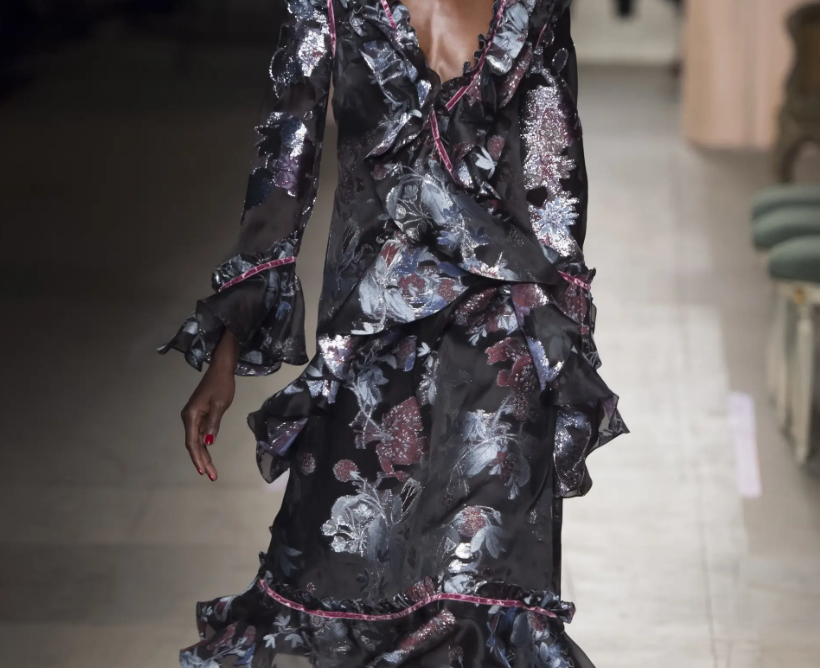
From Hollywood stars Marlene Dietrich, Katharine Hatharine Hepburn and Greta Garbo to today's female politicians, the pantsuit has built a powerful and often political reputation since 1930, Until now.
In the 19th and 20th centuries, the ladies' suit was the dress standard for upper-class and middle-class women - although specifically, it meant a skirt with a fitted jacket.
When women in elite circles began wearing pants in the 1930s, and the trend became more common in 1960, the term "pantsuit" was born (to distinguish it from dress style). However, this phenomenon has generated controversy.
The earliest photo of a pantsuit to appear was a feature in the September 1933 issue of "Night and Day on the Riviera," in which Hollywood actress Marlene Dietrich wore a summer pantsuit. The likes of Dietrich and Katharine Hepburn and Greta Garbo caused shock by daring to wear these outfits in public.
Wearing pants is controversial, but wearing a full suit is even more so; Until the 1950s, women could be arrested for "imitating men" by wearing suits.
Why are pantsuits so controversial?
During World War II, some women wore pants or overalls while doing more practical or dangerous work. However, it was not until the 1960s that the idea of women wearing pantsuits gained wider public support.
In 1966, Yves SaintLaurent introduced the Smoking suit, an elegant dress for evening wear. At the time, the style was still so controversial that American socialite Nan Kempner was turned away from a fashionable New York City restaurant for wearing a suit instead of a skirt or skirt (rumor has it that she took off her pants and used her top coat as a very short skirt).
In the first few pages, a male columnist laments that Yves Saint Laurent's suit is adding fuel to the "destruction" of gender standards, while a woman comments in the back of the magazine: "A tailored suit is best worn in the city." Of the restaurant that refused to serve women wearing pants, the woman commented: "I'd rather change my restaurant than my outfit."
The politics behind the pantsuit
In the 1970s, polyester pantsuits and platform shoes were favored by liberated working women. However, the style is still considered dangerous, and women who wear it often face criticism from male colleagues or bosses. Historian Daniel Delis Hill noted that the pantsuit was not just a female version of the men's suit (cut from dark or striped worsted fabric).
Women's pantsuits come in bright colors, textures, and weaves, while jackets are sometimes cut into the shape of blouses. Diane Keaton's character in the 1977 novel Annie Hall wearing a tank top and tie, as well as her own appearance in public wearing a pantsuit, helped make the style more popular.
In the 1980s and 1990s, wearing a pantsuit still caused unease. Although Pat Nixon, wife of President Robert Nixon, was photographed wearing a pantsuit in 1972 (she was the first first lady to do so), women were not allowed to wear pants in the U.S. Senate until 1993.
The rule is not official, but it is enforced by the gatekeepers of the House of Representatives, even though pants have been accepted by federal agencies since the 1970s.
That year, freshman Senator Carol Moseley-Braun wore her favorite pantsuit to the chamber without knowing this unwritten rule and ignited the Pantsuit Revolution. A short time later, new orders were issued to the guards, specifying that women were allowed to wear "coordinated pantsuits (loose pants with matching tops and jackets, no pedals)."
Clothing sends a message of unity
In the early 2000s, the pantsuit had an image of being old-fashioned and conservative, despite its radical history - but in the mid-2010s, the look made a strong comeback.
Brands such as Bottega Veneta and Chanel showed off stylish pantsuits at their fall/winter 2015 shows, Meanwhile, Rihanna wore an oversized black pantsuit by Maison Margiela's John Galliano to the Grammy Awards that same year.
In 2016, 2.9 million supporters joined Hillary Clinton's Facebook group "Pantsuit Nation" to support her style and follow her presidential campaign; Angela Merkel and Theresa May have also adopted pantsuits as part of their political image.
Now, many women wear pantsuits to vote for female politicians in a nod to the costume's feminist history. In 2019, dozens of female members of Congress wore white (many of them pantsuits) at the State of the Union address - a message of solidarity through clothing that paid tribute to the early women's suffrage movement and expressed support for women's issues. Meanwhile, designers such as ElieSaab and Alberta Ferreti showed pantsuits in their spring 2019 shows.

